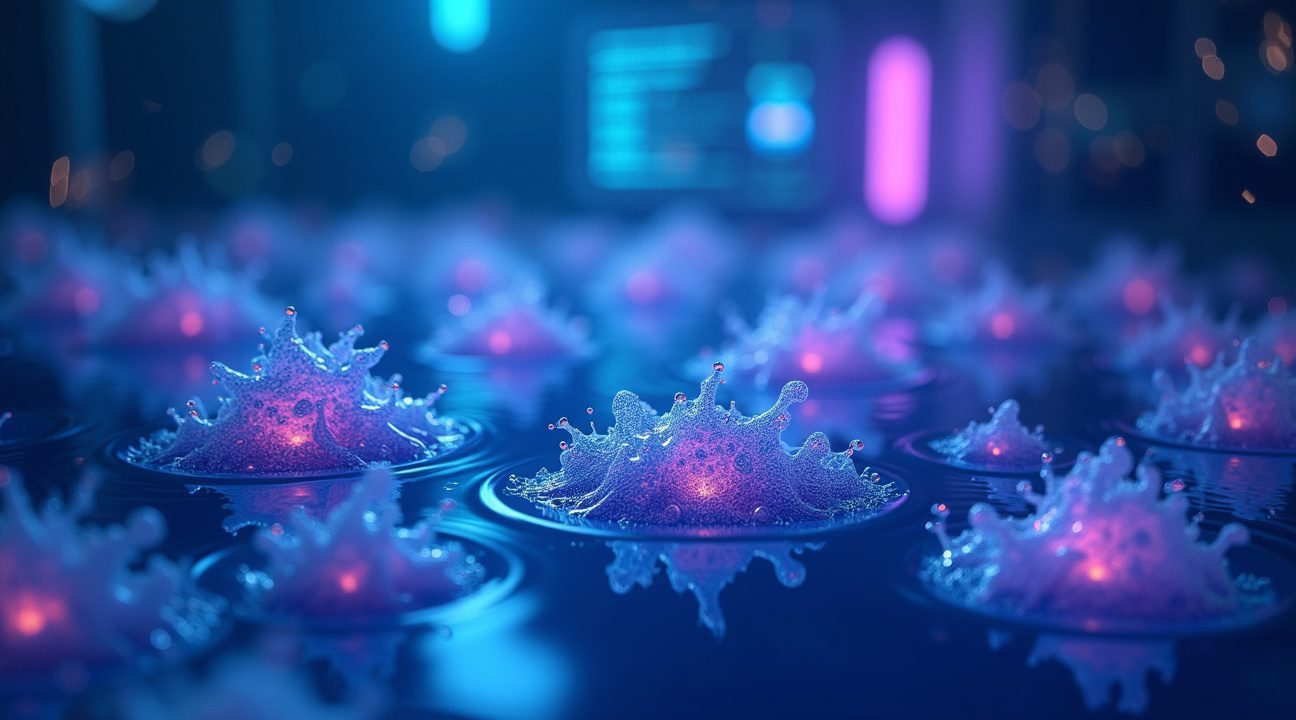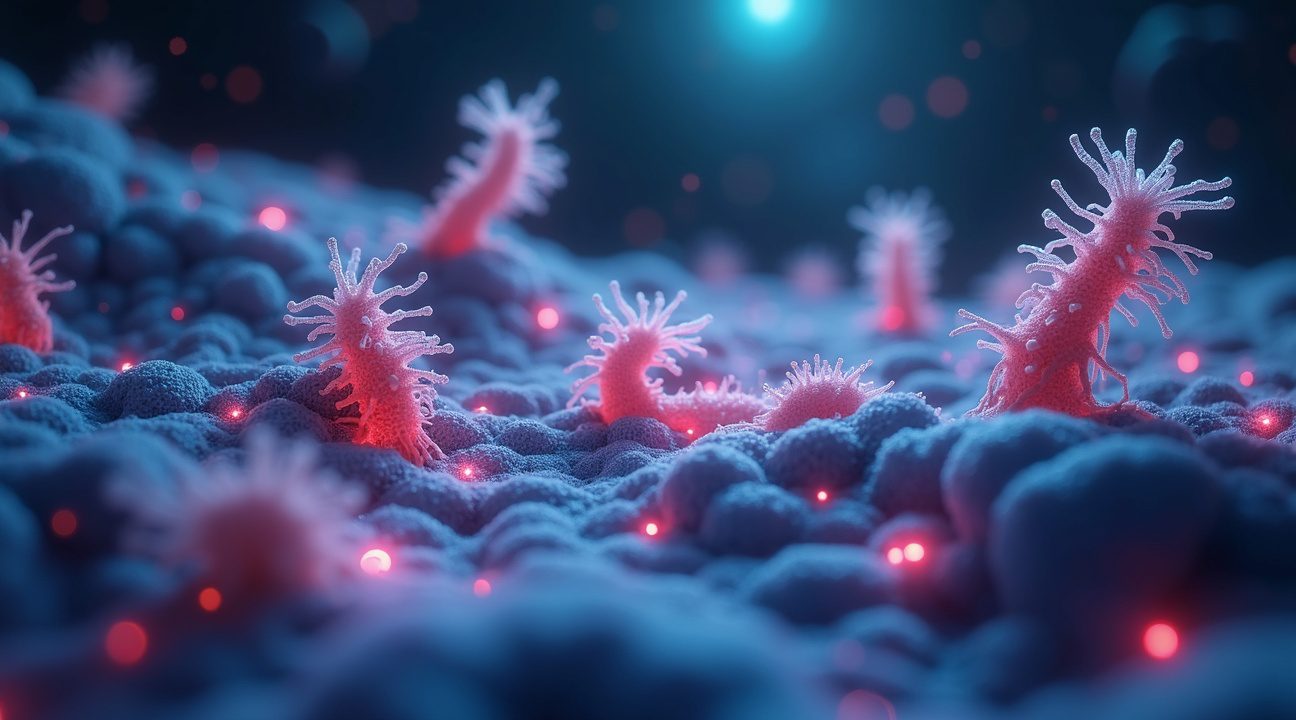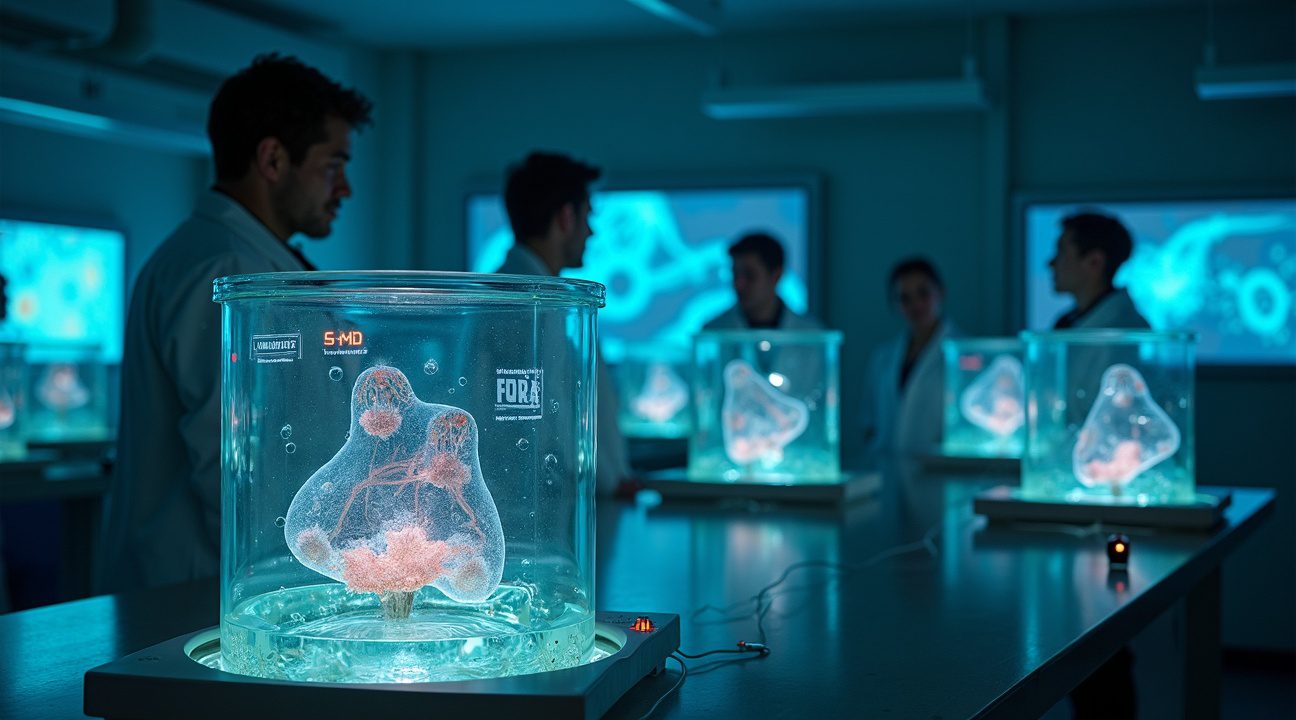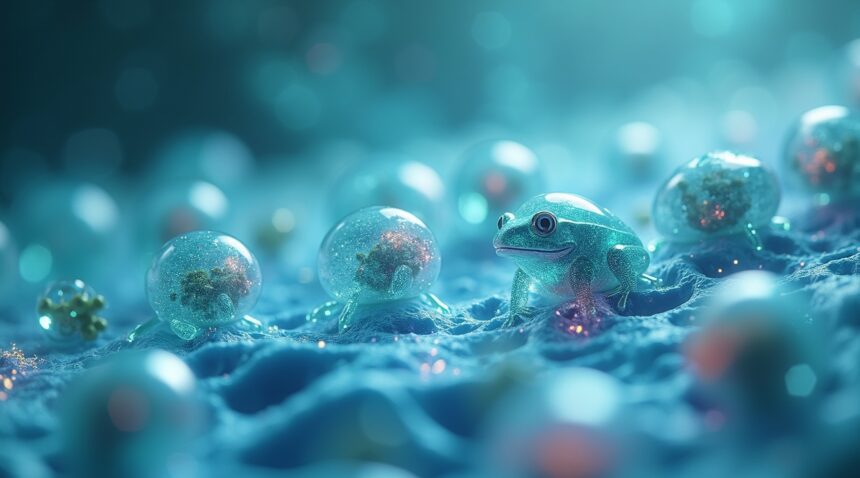Scientists recently discovered organisms that exist in what researchers call a “third state” — neither traditionally alive nor dead, but functioning in a previously unknown biological category that challenges fundamental assumptions about life itself.
Key Takeaways
- Third state organisms defy traditional biological classifications by maintaining cellular function and self-organization without meeting standard definitions of life or death.
- Xenobots and anthrobots can perform complex tasks autonomously including self-healing, debris collection, and group coordination without any programming or nervous system.
- Sukunaarchaeum mirabile represents extreme biological minimalism with only 238,000 base pairs in its genome while maintaining reproductive capability but complete metabolic dependence on its host.
- Bioelectric signaling enables cellular persistence after death through functioning ion channels and membrane pumps that can maintain organization for 4–6 weeks under proper conditions.
- Medical applications show revolutionary potential for targeted drug delivery, tissue repair, and personalized treatments using patient-specific cells that minimize rejection risks.
Biological Organization Beyond Life and Death
These third state organisms operate through bioelectric signaling networks that persist after traditional death markers appear. Cell membranes maintain their electrical gradients through ion channels and pumps that continue functioning for weeks. This persistence allows cellular communities to reorganize into new structures that can move, respond to stimuli, and even reproduce under specific conditions.
Xenobots: Artificial Life with Purpose
Xenobots represent the first artificial life forms created entirely from living cells. Researchers harvest embryonic frog cells and allow them to self-assemble without genetic modification. The resulting organisms develop cilia for movement and can navigate through fluid environments. They collect particles, clear debris, and demonstrate collective behavior patterns similar to swarm intelligence.
Anthrobots: Human-Cell Robots for Medicine
Anthrobots take this concept further by using human tracheal cells. These cellular robots maintain the same self-organizing properties while offering direct medical applications. Scientists can create them from a patient’s own cells, eliminating immune rejection concerns. Early trials show promise for delivering medications directly to tumor sites and repairing damaged tissue.
Sukunaarchaeum mirabile: A Minimalist Survivor
Sukunaarchaeum mirabile challenges assumptions about minimal life requirements. This archaeon possesses one of the smallest known genomes yet maintains reproductive capabilities. It cannot survive independently and requires constant support from its host organism. This dependence raises questions about where life ends and symbiosis begins.
Bioelectric Signaling: A New Framework for Regeneration
The bioelectric properties of these organisms open new frontiers in regenerative medicine. Researchers can program cellular behavior by manipulating electrical signals rather than genetic code. This approach allows for real-time control over cellular activities and could revolutionize treatment approaches for degenerative diseases.
Beyond Drug Delivery: Adaptive Medical Interventions
Medical applications extend beyond simple drug delivery. These organisms can target specific cell types, cross biological barriers, and adapt to changing conditions within the body. Their ability to self-repair and respond to environmental cues makes them ideal candidates for treating complex disorders that require precise, adaptive interventions.
Ongoing Research and Future Impact
Current research focuses on extending the functional lifespan of these third state organisms. Scientists work to optimize culture conditions and develop methods for controlling their behavior patterns. Understanding how bioelectric signals maintain cellular organization could lead to breakthrough treatments for aging, cancer, and neurological disorders.
Redefining Life as We Know It
The discovery of third state organisms forces scientists to reconsider basic definitions of life and death. These entities demonstrate that biological systems can maintain purpose and function outside traditional categories. This knowledge opens possibilities for creating new types of biological machines that blur the line between living systems and engineered devices.
Xenobots and Anthrobots: The Microscopic Living Machines
Scientists have discovered extraordinary entities that challenge everything we thought we knew about life itself. These microscopic creations exist in what researchers call a “third state” — neither fully alive nor completely dead, but something entirely different that defies conventional biological categories.
Revolutionary Living Machines
Xenobots represent a groundbreaking achievement in biotechnology, constructed from frog cells and capable of behaviors that seem almost magical. These multicellular living machines can move independently, organize themselves, and perform complex tasks without any programming whatsoever. Similarly, anthrobots emerge from human cells and demonstrate equally remarkable capabilities.
These entities blur the traditional boundary of life in ways that would have seemed impossible just decades ago. Unlike conventional robots that require complex programming, xenobots and anthrobots operate through inherent biological properties. They can collect debris, transport molecules, and coordinate with other units in their group — all while lacking a nervous system or any external control mechanism.
Capabilities and Characteristics
What makes these living machines truly remarkable is their diverse range of abilities:
- Self-healing properties that allow them to repair damage automatically
- Group coordination enabling collective task performance
- Autonomous object gathering and molecular transportation
- Self-assembly capabilities that don’t require external intervention
- Biodegradable nature that eliminates long-term environmental concerns
Xenobots typically survive for 4–6 weeks, during which they maintain their functionality without degradation. Created from skin or embryonic cells, these entities demonstrate that life after death takes on new meaning when cells can be repurposed into functional units. Their ability to perform tasks autonomously while remaining completely biodegradable makes them particularly valuable for applications where environmental impact matters.
The construction process itself challenges traditional notions of biological engineering. Scientists don’t program these machines in the conventional sense — instead, they harness the natural properties of living cells to create entities that can think and act independently. This approach opens possibilities for applications ranging from environmental cleanup to targeted medical treatments, all while maintaining the safety profile that comes with biodegradable materials.
These microscopic living machines represent just the beginning of what’s possible when we reconsider the boundaries between life, death, and artificial creation. Their existence proves that nature still holds secrets about the fundamental properties of biological matter.
Sukunaarchaeum Mirabile: The Organism Between Life and Dependency
I find myself fascinated by Sukunaarchaeum mirabile, an archaeal microbe that defies conventional biological classification. This extraordinary organism exists in a gray area that challenges everything scientists thought they knew about the fundamental nature of life itself.
Sukunaarchaeum mirabile represents something entirely unique in the microbial world. It’s not a virus, yet it’s what researchers describe as a highly streamlined cellular organism. This distinction becomes crucial when examining what makes something truly alive versus merely existing in a state of biological limbo.
The organism possesses its own ribosomes and messenger RNA, allowing it to replicate independently through these cellular mechanisms. However, this capability comes with a significant caveat that places it in an unprecedented category. It lacks nearly all metabolic pathways that typically characterize living organisms, creating complete dependence on its host for survival.
A Genome That Redefines Minimal Life
The genome of Sukunaarchaeum mirabile tells a remarkable story of biological minimalism. With only 238,000 base pairs, it contains roughly half the genetic material found in the smallest known archaeal genome previously discovered. This dramatic reduction in genetic complexity raises profound questions about the minimum requirements for life.
Several characteristics make this organism particularly intriguing from a scientific perspective:
- Its genome size represents an extreme case of reductive evolution
- It maintains cellular machinery for reproduction while abandoning metabolic independence
- The organism demonstrates that life can exist with far fewer genes than previously thought possible
- It challenges the traditional boundary between parasitic organisms and cellular life forms
This genetic streamlining suggests that Sukunaarchaeum mirabile has undergone extensive evolutionary pressure to shed unnecessary biological functions. The process has resulted in an organism that exists at the very edge of what scientists consider viable cellular life.
Classical biological definitions of life typically require both metabolism and independent reproduction capabilities. Sukunaarchaeum mirabile meets only one of these criteria fully, creating a definitional crisis for biologists. The organism can reproduce using its own cellular machinery, yet it cannot sustain itself metabolically without external support.
This dependency mirrors certain aspects of viral behavior, though viruses are generally considered “not alive” due to their complete reliance on host cellular machinery. However, Sukunaarchaeum presents an even more complex case because it maintains its own reproductive apparatus while abandoning metabolic self-sufficiency.
The discovery forces scientists to reconsider what constitutes the minimum threshold for life. Traditional models assume that living organisms must be capable of independent metabolism, but this archaeal species demonstrates that reproduction and metabolism can be separated in ways previously thought impossible.
The implications extend beyond academic classification. Understanding how organisms adapt and transform their fundamental characteristics provides insights into evolutionary processes and the potential for life in extreme environments.
Sukunaarchaeum mirabile’s host dependency creates a fascinating parallel to obligate parasites, yet its retention of cellular reproduction machinery sets it apart from typical parasitic relationships. The organism has essentially outsourced its metabolic needs while maintaining reproductive autonomy, creating a hybrid existence that doesn’t fit neatly into established biological categories.
This discovery suggests that the spectrum between dependence and independence in biological systems is far more nuanced than previously understood. The organism exists in a state that challenges binary classifications of life and death, instead occupying a unique position that expands our understanding of what’s possible in cellular evolution.
The study of Sukunaarchaeum mirabile opens new avenues for research into minimal life forms and the evolutionary pressures that shape cellular complexity. Its existence proves that life can persist with dramatically reduced genetic machinery, provided the right environmental support systems are available.
How Cells Enter the Third State After Death
When most people think about death, they imagine a clear boundary between life and non-life. Scientists have discovered that cellular death isn’t always so definitive. Instead, cells can enter what researchers call a “third state” — a condition that’s neither traditionally alive nor dead.
The key to understanding this phenomenon lies in the electrical systems that power cellular activity. Ion channels and membrane pumps within cells operate like sophisticated electrical circuits. These microscopic components don’t immediately shut down when an organism dies. Under specific conditions, they continue functioning and can even drive remarkable new behaviors.
The Bioelectric Foundation of Cellular Persistence
Ion channels control the flow of charged particles across cell membranes, while membrane pumps actively transport these ions to maintain electrical gradients. These systems create bioelectric signals that coordinate cellular activities. After death, these electrical circuits may persist for extended periods, enabling cells to maintain basic organizational functions.
Self-assembly becomes possible when several factors align perfectly:
- Adequate nutrient availability to fuel cellular processes
- Sufficient oxygen levels to support minimal metabolic activity
- Functioning bioelectric signals that coordinate cellular behavior
- Appropriate temperature conditions that don’t damage cellular machinery
- Healthy, younger cells that retain structural integrity
Environmental influences play a crucial role in determining whether cells can successfully transition into this third state. Temperature fluctuations, pH levels, and the presence of external fuel sources all impact the likelihood of this cellular transformation occurring.
The age and health of cells before death significantly affect their ability to enter the third state. Younger, healthier cells retain more functional ion channels and membrane pumps, giving them better odds of maintaining electrical signaling after traditional death markers appear.
These cellular assemblies demonstrate that life can take unexpected forms under extraordinary circumstances. The cells organize themselves into new multicellular structures that display coordinated behaviors, even though they lack many characteristics traditionally associated with living organisms.
Electrical signaling remains the driving force behind these assemblies. Without functioning bioelectric networks, cells cannot coordinate their activities or maintain the organizational patterns that define the third state. This electrical activity distinguishes the third state from simple decomposition or passive cellular remnants.
Traditional cell death involves a cascade of molecular breakdowns. Cellular membranes lose integrity, enzymatic processes halt, and structures decompose in predictable patterns. The third state represents a different pathway entirely. Instead of breakdown, cells maintain enough organizational activity to form new structures and exhibit emergent behaviors.
These cellular assemblies aren’t immortal, despite their remarkable persistence. Most survive for 4 to 6 weeks before their electrical systems finally fail and decomposition begins. During this window, they can display surprising capabilities, including movement, coordination, and even basic problem-solving behaviors.
The discovery challenges fundamental assumptions about the boundaries between life and death. Cells can maintain enough electrical activity to organize and function collectively, even after meeting conventional criteria for death. This persistence depends entirely on the continued operation of ion channels and membrane pumps that maintain bioelectric signaling.
Environmental conditions must remain favorable throughout this period. Changes in temperature, nutrient availability, or oxygen levels can quickly end the third state and trigger conventional decomposition. The delicate balance required explains why this phenomenon occurs only under specific laboratory conditions or rare natural circumstances.
Understanding how cells enter the third state opens new questions about cellular resilience and the nature of biological organization. These findings suggest that death isn’t always an immediate endpoint but can sometimes represent a transition to a different form of cellular existence powered by persistent bioelectric activity.

Medical Breakthroughs and Therapeutic Applications
Cell-based biobots represent a groundbreaking advancement in medical science, offering unprecedented opportunities for precision healing and drug delivery. These innovative biological machines harness the power of living cells to perform specific therapeutic tasks within the human body, creating possibilities that traditional treatments simply can’t match.
Revolutionary Applications in Disease Treatment
The therapeutic potential of biobots extends across multiple medical fields, with several key applications showing remarkable promise:
- Targeted drug delivery systems that can navigate directly to diseased tissues while avoiding healthy cells
- Tissue repair mechanisms that actively rebuild damaged organs and structures
- Personalized treatment protocols using a patient’s own cells to minimize rejection risks
- Precision medicine approaches that adapt to individual patient needs and conditions
Cystic fibrosis treatment stands as one of the most promising applications for biobot technology. I’ve observed how these microscopic machines could potentially clear mucus blockages in patients’ airways more effectively than current therapies. The biobots can be programmed to target specific areas of the respiratory system, delivering therapeutic agents exactly where they’re needed most.
Atherosclerosis presents another compelling target for biobot intervention. These cellular machines could potentially break down arterial plaques that cause heart disease, offering a less invasive alternative to traditional surgical procedures. The precision of biobots allows them to distinguish between healthy arterial tissue and problematic plaque buildup, reducing the risk of unintended damage.
The regenerative medicine applications of biobots open entirely new treatment pathways. Unlike conventional therapies that simply manage symptoms, these biological machines actively participate in healing processes. They can stimulate cell growth, remove damaged tissue, and even guide the formation of new blood vessels in injured areas.
Drug delivery represents perhaps the most immediately practical application of biobot technology. Traditional medications often affect the entire body, causing unwanted side effects in healthy tissues. Biobots change this paradigm by carrying therapeutic compounds directly to their intended targets. This precision reduces dosage requirements and minimizes adverse reactions, making treatments safer and more effective.
The biocompatibility advantages of biobots set them apart from synthetic alternatives. Because these machines can be created from a patient’s own cells or carefully matched donor cells, the immune system typically accepts them without triggering rejection responses. This compatibility eliminates many of the complications associated with foreign medical devices or transplanted materials.
Manufacturing biobots from patient-specific cells creates truly personalized medicine opportunities. Each biobot can be customized to match an individual’s unique cellular characteristics and specific medical needs. This level of personalization wasn’t possible with previous medical technologies, representing a significant leap forward in treatment precision.
The concept reminds me of how robots can adapt their form to accomplish specific tasks, except biobots do this at the cellular level within living organisms.
Early research suggests that biobots could revolutionize chronic disease management. Instead of requiring daily medications or frequent medical interventions, patients might receive biobot treatments that continue working for extended periods. These biological machines could monitor disease progression and adjust their therapeutic responses accordingly.
Tissue engineering applications show particular promise for treating previously untreatable conditions. Biobots can serve as living scaffolds that guide new tissue growth while simultaneously delivering growth factors and other essential compounds. This dual functionality accelerates healing processes and improves treatment outcomes.
The development timeline for biobot therapies varies depending on the specific application and target condition. Some drug delivery applications may reach clinical trials within the next few years, while more complex tissue repair applications will require additional research and development time.
Safety protocols for biobot therapies continue evolving as researchers better understand these biological machines. Current studies focus on ensuring that biobots complete their intended tasks and then safely dissolve or exit the body without causing long-term effects. This controlled lifecycle management represents a crucial aspect of biobot design and implementation.

Redefining Life, Death, and Evolution
This groundbreaking discovery forces scientists to reconsider fundamental assumptions about existence itself. The identification of organisms existing in a third state challenges everything I thought I knew about the boundaries between life and death, suggesting these categories aren’t as fixed as previously believed.
Transforming Our Understanding of Death
Death may no longer represent a definitive endpoint but rather a gateway to transformation. Cells continue demonstrating activity after organismal death, creating entities that exhibit emergent behaviors without fitting traditional biological classifications. This phenomenon disrupts established evolutionary theory by suggesting organisms can transition into new forms that maintain function without conventional life processes.
The implications extend far beyond laboratory observations. Legal frameworks defining death face potential upheaval as scientists document continued cellular activity that persists well beyond traditional death markers. Philosophical ramifications emerge as researchers question whether consciousness, identity, and existence operate on more complex spectrums than binary alive-or-dead classifications.
Unique Properties of Third State Entities
These remarkable organisms demonstrate characteristics that separate them from both traditional life forms and non-living matter. Unlike conventional organisms that maintain self-sufficient metabolism and autonomous replication, third state entities depend heavily on external resources or host-derived materials for their continued existence.
The metabolism comparison reveals striking differences across categories:
- Traditional organisms: Sustain independent metabolic processes for weeks to years
- Third state entities: Maintain activity for approximately 4–6 weeks while lacking metabolic independence
- Viruses: Exhibit variable lifespans but require host cells for replication
- Dead matter: Shows no organized metabolic activity whatsoever
What makes these entities fascinating isn’t just their survival mechanism but their self-organizing properties. They display behaviors that differ significantly from predictable biological models, creating patterns and responses that seem purposeful despite lacking traditional life markers. Scientists observe these organisms adapting to environmental changes in ways that suggest intelligence or at least sophisticated programming that extends beyond simple chemical reactions.
The discovery forces evolutionary biologists to expand their frameworks beyond natural selection acting on living organisms. Third state entities suggest evolution might continue operating even after traditional death, potentially creating new pathways for biological innovation that weren’t previously recognized. This challenges core assumptions about how life develops, adapts, and potentially transcends conventional biological limitations.

Sources:
Health World Busters – Life After Death: Scientists Unveil Mysterious Third State of Living Cells Beyond Organismal Death
Earth.com – Third State Existence Beyond Life, Death Confirmed by Scientists
Local 12 – Scientists Have Discovered ‘Third State’ Between Life and Death
Prince Ea – The Microbe That Redefines Life Reminds Us Why Curiosity Still Matters
Popular Mechanics – Scientists Discover Creature That Exists Between Life, Not Life


